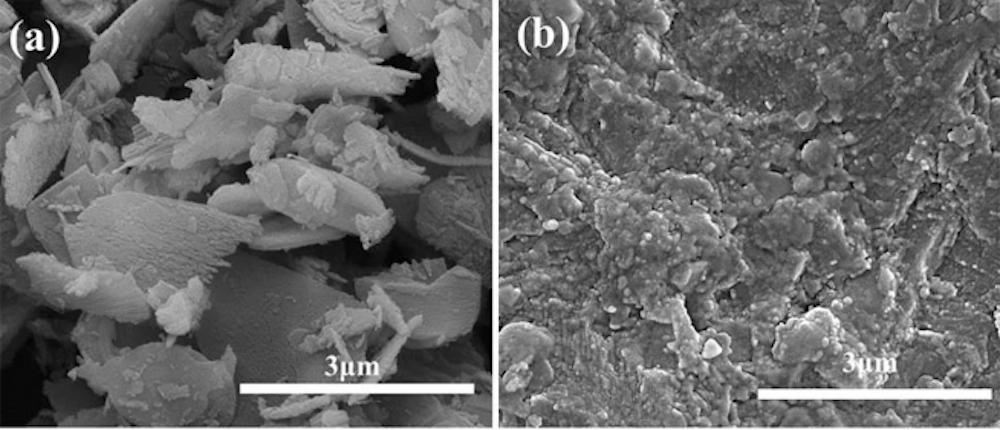
[Image above] Researchers used pure wurtzite boron nitride powder (a) as the starting material to synthesize compact pure wBN (b). They determined wBN hardness is much closer to cubic boron nitride than diamond. Credit: Liu et al., Scientific Reports (CC BY 4.0)
With the publication of a Physical Review Letters paper in 2009, the internet lit up with headlines that diamond may no longer be the hardest material. Instead, wurtzite boron nitride (wBN) was predicted to have 18% higher indentation strength.
For some scientists, the paper’s results were surprising. “wBN and cBN [cubic boron nitride] have a similar bond length, elastic moduli, ideal tensile and shear strength,” which suggests the two would demonstrate similar indentation strengths, researchers write in an open-access paper. Indentation strength of cBN is around 50 GPa; diamond is 70–150 GPa.
However, the predicted strength of wBN comes with a grain of salt—it is based on simulations, not experimental observations.
The 2009 study used theoretical simulations to calculate indentation strength because wBN, an extremely rare material in nature, is difficult to produce in sufficient quantities to test by experiment.
The few experimental studies measuring wBN hardness align much closer with cBN but vary significantly, from 24 GPa to 54 GPa, likely due to quality of the wBN tested.
Traditionally, wBN is produced by transforming hexagonal boron nitride (hBN), the most stable crystal form of boron nitride. “The other phases [hBN, cBN] coexist in the transformed samples during the thermal and pressurized treatment or fabrication of sintered compacts, and the resultant values cannot represent those of pure wBN,” the open-access researchers explain.
The researchers—from Weihai Weiying Tool Co. (Weihai, China), Exploration and Petroleum Engineering Center – Advanced Research Center (Dhahran, Saudi Arabia), and Sichuan University (Chengdu, China)—wanted to clarify the “long-standing debate” about whether pure wBN is harder than diamond. To do so, they needed to produce pure single-phase wBN bulk material to test.
To create pure wBN, the researchers explored using pure wBN powder rather than hBN as the starting material. Under ultra-high-pressure and high-temperature conditions using a two-stage (6–8 system) large-volume multi-anvil apparatus, they synthesized both pure wBN and cBN bulk samples.
After conducting a series of experiments to study the wBN to cBN phase transformation pressure-temperature boundary, the researchers measured the hardness of pure wBN, a mixture of wBN and cBN, and pure cBN compacts under the action of a 4.9 N load force.
The average indentation strengths for each material were
- Pure wBN: 46 ± 3 GPa,
- Mixture: 61 ± 4 GPa, and
- Pure cBN: 65 ± 5 GPa.
“The results show that the hardness of wBN increases with the increase of cBN content and proves that the hardness is lower than cBN,” the researchers conclude.

Although wBN did not beat diamond in hardness, the researchers did find wBN beats diamond in a different area. “The material [wBN] exhibits a high thermal stability with an onset oxidation temperature at 920°C in air that is much higher than diamond,” they write. On the other hand, “it is lower than that of pure cBN compact (~1,140°C).”
The open-access paper, published in Scientific Reports, is “Hardness of polycrystalline wurtzite boron nitride (wBN) compacts” (DOI: 10.1038/s41598-019-46709-4).
